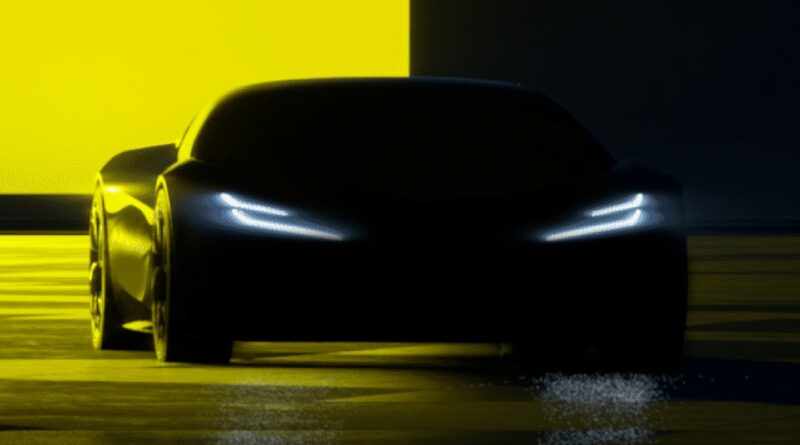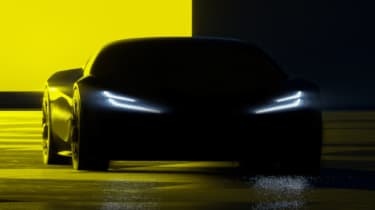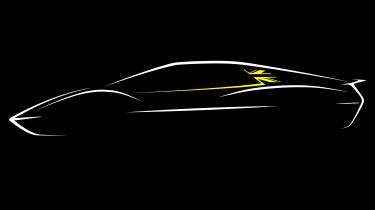All-electric Lotus ‘Type 135’ sports car on track for 2025 reveal
Zero-emissions Lotus Emira replacement will be built in the UK on a bespoke sports car architecture
Lotus is dead set on becoming an electric-only brand by 2028, with its trio of ‘lifestyle’ EVs – the Eletre SUV, Emeya GT and a smaller mid-size SUV – to make up the vast majority of the 150,000 cars it hopes to be building per year by that time. However Lotus is still known as a maker of sports cars to many, and it’s a tradition that will continue.
Work is well underway on a fully electric Lotus sports car that’ll do battle with the next-generation Porsche Cayman and Boxster, cars that are set to be electric, too. Codenamed the Type 135 for now, the two-seat electric sports car is slated to be revealed in 2025 before the first examples arrive with customers in 2027. The car will be built in the UK.
-
Littler Lotus Type-134 electric SUV is coming for the Porsche Macan
Speaking to Auto Express at the Emeya’s UK debut, Lotus Vice President and Chief Commercial Officer, Mike Johnstone, said “for us, what’s important is it’s the bullseye of the brand. So even though it’s electrified, it needs to have the same spirit as the Emira, as the Exige, as the Evora, etc, going back over the last 75 years. It needs to encapsulate the pure sprint of what that Lotus sports car should be.”
When it finally arrives, the Type 135 will sit alongside the petrol-powered Lotus Emira on showroom floors for a very brief period. Johnstone told us that, despite the UK government’s decision to delay the ban on sales of new petrol and diesel cars until 2035, the Emira is still being retired in 2028 as planned, thus going down in the history books as the last-ever petrol-powered Lotus.
Lotus and Alpine collaboration
Lotus and performance brand Alpine were expected to work on this electric sports cars project together, with the French firm in the process of creating a zero-emissions successor to its featherweight A110. However the two parted ways earlier this year. Johnstone said “there were some advantages to working with Alpine, but that was always more of an exploration than a commitment as it was under a memorandum of understanding. Both parties decided actually it was better doing it slightly differently from each other, and there’s a really good relationship that remains in place now.”
Lotus was also working with battery specialist Britishvolt to develop the new technology that would be key to the Type 135, however the firm entered administration for the second time in January 2023 and its future is currently unclear.
However the announcement of the collaboration between Lotus and Britishvolt did at least provide us with a teaser image of the Type 135. It hints at an Esprit-like silhouette, with a roofline and windowline that appear similar in shape to those of the brand’s iconic mid-engined supercar, along with a similarly pointy nose. The strong, pronounced haunches over the front and rear axles of the vehicle are more in keeping with the brand’s latest performance car design language, drawing inspiration from the Evija electric hypercar and the Emira.
The other similarly shadowy teaser image of the Type 135 gives us little except an idea of the unique split headlight design it’ll sport, which looks to be very similar to the Emeya’s.
Lotus electric sports car platform
We also know that the Type 135 won’t be using the same ‘Electric Premium Architecture’ as the Eletre or Emeya. Instead, it’s set to use a bespoke architecture just for electric sports cars, known internally as ‘E-Sports’. It incorporates a lightweight rear-subframe developed through the company’s ‘Project LEVA’ (Lightweight Electric Vehicle Architecture) that Lotus says can accommodate various battery designs and sizes, plus one or two electric motors but only to drive the rear wheels.
In 2021, Lotus outlined details of two potential two-seat sports car applications using the versatile architecture. The first had a wheelbase of at least 2,470mm – around the same as the current Porsche Cayman’s – could be fitted with a 66.4kWh battery and used one 469bhp e-motor. The other had a wheelbase of at least 2,650mm – not too far off the all-electric MG Cyberster’s – could be fitted with a whopping 99.6kWh battery and featured two motors producing up to 872bhp.
Both would utilise a ‘chest’ layout for the battery, whereby its stacked vertically behind the passenger seats. This setup would provide a similar weight distribution and centre of gravity to a typical mid-engined petrol sports car, plus a low ride height. Alternatively, the battery could be positioned under the car’s floor, like it is in almost every EV, with Lotus suggesting this design would work better for a ‘2+2’ sports car.
What do you think of the electrification plans for Lotus? Let us know in the comments…
Source: Read Full Article



 Littler Lotus Type-134 electric SUV is coming for the Porsche Macan
Littler Lotus Type-134 electric SUV is coming for the Porsche Macan



